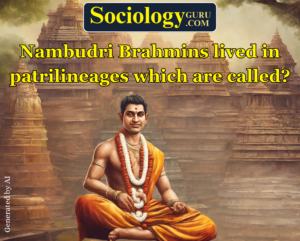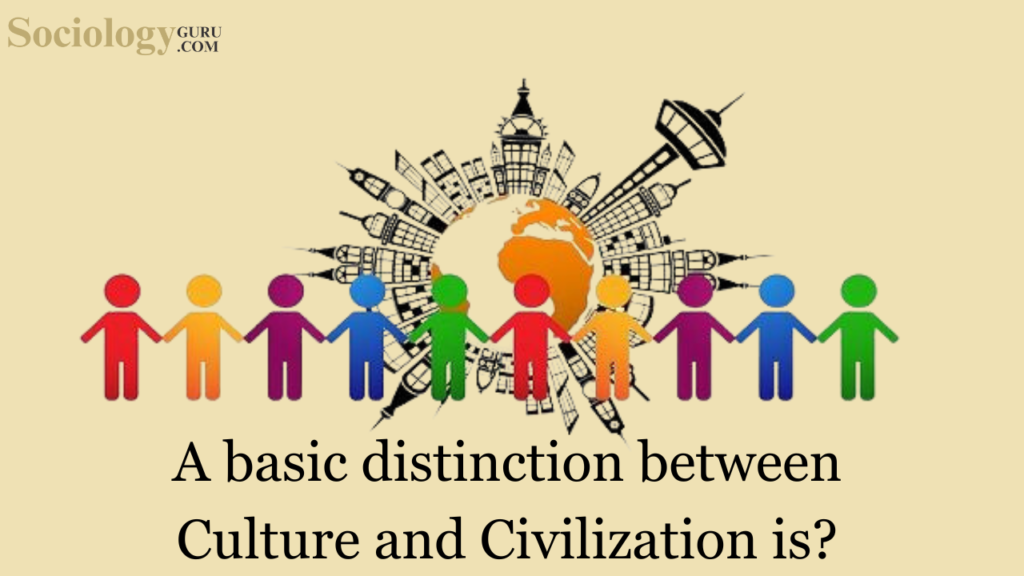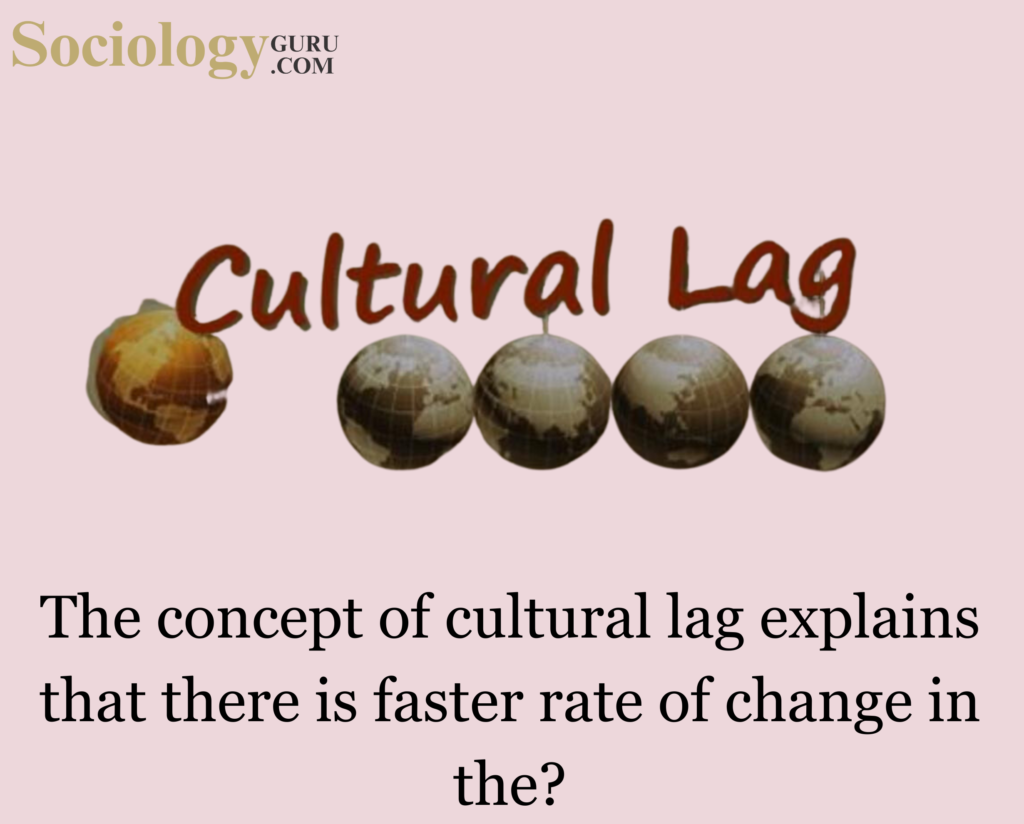Question: Nambudri Brahmins lived in patrilineages which are called?
- Illam
- Tarwads
- Okka
- Karanavan
Answer: (1)The question at hand revolves around the social organization of Nambudri Brahmins, specifically focusing on their patrilineages. The options provided are (a) Illam, (b) Tarwads, (c) Okka, and (d) Karanavan. The correct answer is (a) Illam. Nambudiri Brahmins traditionally lived in ancestral homes known as Illams, and their societal structure and cultural practices are integral to understanding the broader socio-religious landscape of Kerala. The Nambudiri Brahmins are a prominent Brahmin community in the state of Kerala, India. They hold a distinctive place in the social hierarchy and are known for their adherence to Vedic rituals and Sanskrit traditions. The term “Illam” refers to the ancestral homes of Nambudiri Brahmins, and it is within these Illams that their patrilineages and family structures are organized. The anthropologist Joan Mencher, in her studies, has provided valuable insights into the socio-cultural dynamics of the Nambudiri Brahmins. She describes them as a wealthy and aristocratic landed caste, attributing to them the highest ritual and secular rank in the traditional social order of Kerala. This characterization underscores the significant influence and prestige that the Nambudiris enjoyed in their societal context. The Illam, as the ancestral home, serves as the epicenter of Nambudiri family life. It is within this structure that the patrilineal lineage is maintained, and the customs and traditions of the community are preserved. The Illam represents more than just a physical space; it embodies the continuity of family heritage, rituals, and cultural practices. The Nambudiri Brahmins are renowned as the carriers of the Sanskrit language and ancient Vedic culture in Kerala. Their role extends beyond the confines of their Illams, as they play a crucial part in preserving and propagating the intellectual and spiritual traditions of Hinduism. The Illam, therefore, becomes a symbol of cultural heritage and a repository of knowledge passed down through generations. One distinctive feature of Nambudiri society is its hierarchical structure, which is evident within the Illam itself. The head of the Illam is known as the “Karanavan.” The term “Karanavan” refers to the eldest male member of the family who holds a position of authority and is responsible for making important decisions regarding family matters. The Karanavan is not just a familial figure but also plays a key role in the broader social and religious activities of the community. The concept of the Tarwad is also relevant in understanding the organization of Nambudiri Brahmin families. A Tarwad is a larger unit that consists of multiple Illams, often encompassing extended family members. The Tarwad functions as a collective entity, sharing resources and responsibilities. While the Illam focuses on the immediate patrilineal family, the Tarwad expands the social structure to include a broader network of relatives. Furthermore, the term “Okka” is another aspect of Nambudiri social organization. An Okka is a group of Illams that share common rituals and ceremonies. This grouping allows for a sense of community beyond the individual Illam or Tarwad. Okkas play a role in social gatherings, festivals, and religious observances, fostering a sense of identity and belonging among the Nambudiri Brahmins. The cultural and social significance of the Illam extends to the ritual and religious practices of the Nambudiri Brahmins. They are known for their strict adherence to Vedic rituals and ceremonies, and the Illam serves as the locus for these sacred activities. The preservation of purity, adherence to rituals, and the transmission of religious knowledge are integral aspects of life within the Illam. In addition to their cultural and religious roles, the Nambudiri Brahmins were also known for their economic and political influence. Mencher’s description of the Nambudiris as being “above and outside the political systems of the kingdoms” highlights their unique position in the socio-political landscape of Kerala. Their authority and power were derived not only from their economic prosperity but also from their role as custodians of cultural and religious traditions. In conclusion, the answer to the question regarding the patrilineages of Nambudri Brahmins is “Illam.” The Illam serves as the ancestral home that encapsulates the family structure, cultural practices, and religious traditions of the Nambudiri Brahmins. Understanding the significance of the Illam provides insights into the complex social organization, cultural richness, and historical influence of this community in the unique socio-religious tapestry of Kerala. |
Take a Quick Sociology Quiz to measure your Performance
Frequently Asked Questions:
1. Question: Define the term “ethnic movement” and provide an example from India.
Answer: An ethnic movement refers to a collective effort by a group sharing common cultural, linguistic, or religious traits, seeking to assert their identity and rights; an example from India is the Khalistan Movement in Punjab.
2. Question: Identify the main objectives behind the Gorkhaland ethnic movement.
Answer: The Gorkhaland ethnic movement primarily seeks to establish a separate state for India’s Nepali-speaking population in the Darjeeling region, advocating for linguistic and cultural recognition and political autonomy.
3. Question: What was the Operation Blue Star, and which ethnic movement was it related to?
Answer: Operation Blue Star was a military action in 1984, aiming to remove Sikh militants hiding in the Golden Temple in Amritsar; it is related to the Khalistan movement, which sought a separate Sikh country.
4. Question: Mention a critical factor that triggered the emergence of ethnic movements in India, as discussed by Dipankar Gupta.
Answer: Dipankar Gupta emphasized that ethnicity is fundamentally a political process, wherein caste and religion, the key components of identity formation, are politicized by leaders for vested interests.
5. Question: What were the primary reasons for the Assam Ethnicity conflicts involving Bodo tribals and Bengali Muslim settlers?
Answer: The Assam Ethnicity conflicts primarily stemmed from issues related to immigration, land rights, and resource allocation, leading to clashes, riots, and evolving relationships among indigenous communities to address challenges.
6. Question: Briefly describe the role of the Dravidian Movement in terms of caste and societal structure.
Answer: The Dravidian Movement, led notably by E.V. Ramasamy, aimed to establish an egalitarian society, focusing on anti-Brahmanism and advocating for equal rights for backward castes, while also introducing reforms like self-respect marriages.
7. Question: Name the prominent ethnic movements in North-East India and specify one common objective.
Answer: Prominent ethnic movements in North-East India include the Nagas’ and Mizos’ struggles; a common objective was to gain autonomy and recognition for their distinct tribal identities and cultural uniqueness.
8. Question: What is the key argument of Gail Omveldt regarding traditional Indian society and multiculturalism?
Answer: Gail Omveldt opposed romanticizing traditional Indian society, arguing that hierarchy has always dominated it and dismissing the notion that multiculturalism is an intrinsic feature of Indian society as a myth.
9. Question: Briefly explain the social hierarchy factor as a contributing element to ethnic movements as suggested by Olzak.
Answer: Olzak suggests that the construction of hierarchies among ethnic communities, which often leads to the suppression of one group by another, is a key factor that can instigate social and ethnic movements.
10. Question: Identify one consequence of the unequal economic development factor within the context of ethnic movements in India.
Answer: One consequence of unequal economic development is the marginalization and underdevelopment of certain groups, leading to feelings of alienation and sometimes initiating ethnic movements as these groups strive for equality and recognition.
To master these intricacies and fare well in the Sociology Syllabus, aspiring sociologists might benefit from guidance by the Best Sociology Teacher and participation in the Best Sociology Coaching. These avenues provide comprehensive assistance, ensuring a solid understanding of sociology’s diverse methodologies and techniques.
META TAGS:
Why Vikash Ranjan’s Classes for Sociology?
Proper guidance and assistance are required to learn the skill of interlinking current happenings with the conventional topics. VIKASH RANJAN SIR at SOCIOLOGY GURU guides students according to the Recent Trends, making him the Best Sociology Teacher for Sociology.
At Sociology Guru, the Best Sociology Coaching platform, we not only provide the best study material and applied classes for Sociology but also conduct regular assignments and class tests to assess candidates’ writing skills and understanding of the subject.
Choose The Best Sociology Teacher for your Preparation?
To master these intricacies and fare well in the Sociology Syllabus, aspiring sociologists might benefit from guidance by the Best Sociology Teacher and participation in the Best Sociology Coaching. These avenues provide comprehensive assistance, ensuring a solid understanding of sociology’s diverse methodologies and techniques. Sociology, Social theory, Best Sociology Teacher, Best Sociology Coaching, Sociology Syllabus.
Best Sociology Teacher, Sociology Syllabus, Sociology, Sociology Coaching, Best Sociology Coaching, Best Sociology Teacher, Sociology Course, Sociology Teacher, Sociology Foundation, Sociology Foundation Course, Sociology CUET, Sociology for IAS, Sociology for UPSC, Sociology for BPSC, Sociology for UGC NET, Sociology for JPSC,
Follow us :
KEYWORD:-Nambudri Brahmins, Nambudri Brahmins, Nambudri Brahmins, Nambudri Brahmins, Nambudri Brahmins, Nambudri Brahmins, Nambudri Brahmins, Nambudri Brahmins, Nambudri Brahmins, Nambudri Brahmins, Nambudri Brahmins, Nambudri Brahmins, Nambudri Brahmins, Nambudri Brahmins, Nambudri Brahmins, Nambudri Brahmins, MA CUET SOCIOLOGY



